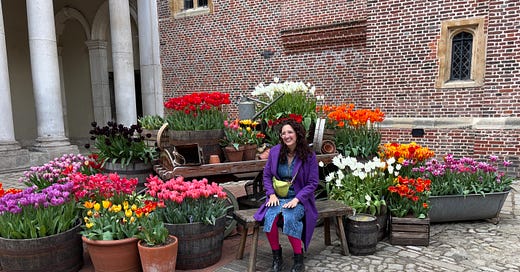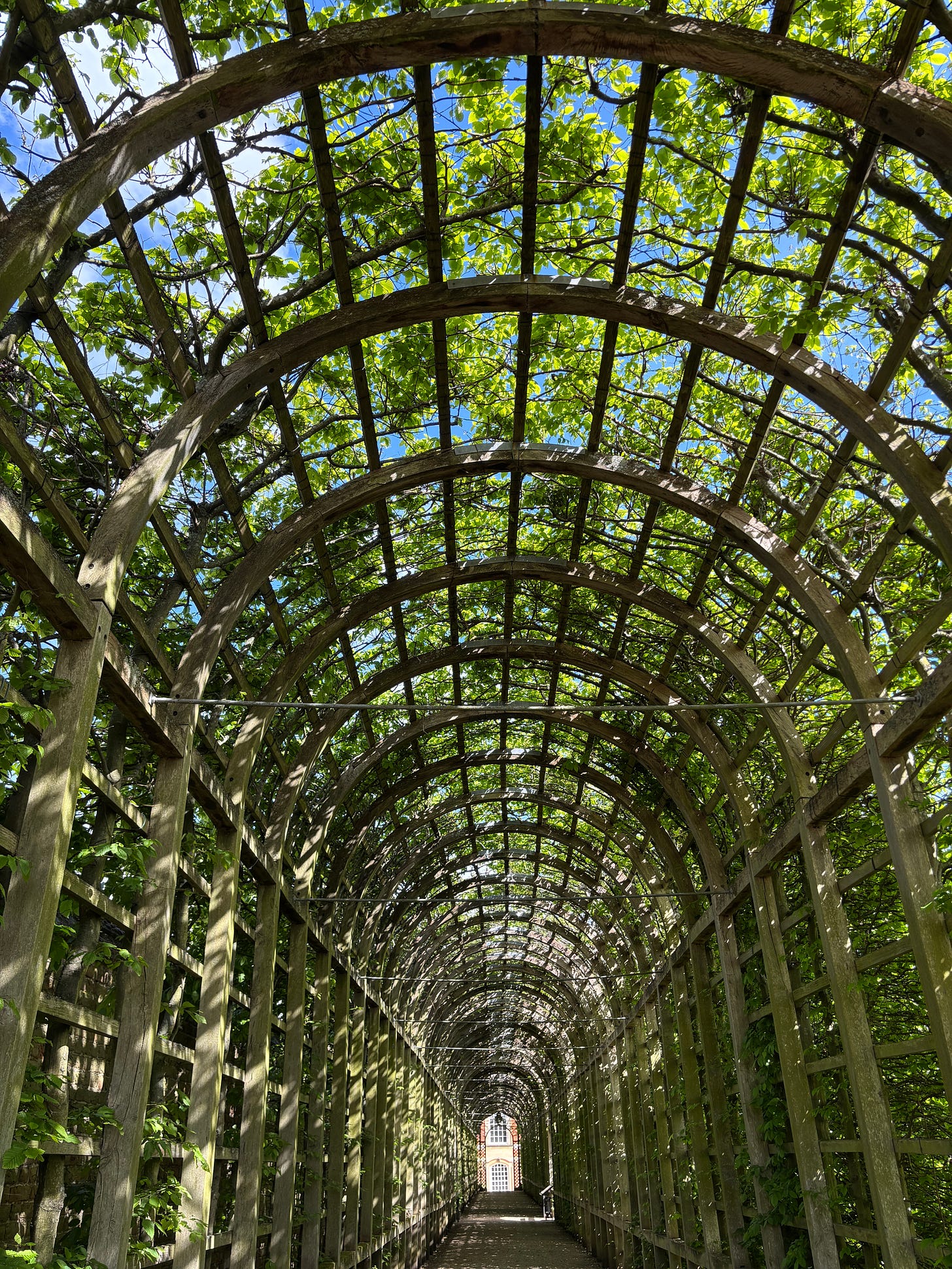Hi darling, I’m Kendall, a horticultural therapist. Here on my Substack, I share tips on how to use your garden to grow your personal power in a world that tries to keep women stuck, exhausted & burnt out. Come grab your trowel and join the rebellion, we’ve got a patriarchy to dismantle.
Welcome to the Seed, the place where we learn to resource ourselves in the garden so that we can unlock more joy in our lives.
Well where do I begin?! If you are a colour lover like me then the Hampton Court Tulip Festival is a must visit. It runs until early May every year and aside from the flowers theres some engaging and informative talks all about Tulips!
It’s pretty pricey as you have to pay for a ticket to look round the castle in its entirety, there is no ‘just gardens option’. But for £28 for an adult I got to indulge my love of SIX (the musical about Henry VIII’s 6 wives) and geek out on a load of history that took me back to my school days.
I met my friend Steph there and I really lucked out because not only is she great company and a fabulous book coach who helps business owners get all their knowledge and magic into a kickass book that will help grow their business, but she also used to work at the palace when she was 17.
So she knew exactly where she was going, which was good because I would have got ridiculously lost on my own!
So here we go. I’m sharing the things I loved about the Gardens, how you can recreate them at home and the things I wasn’t keen on, plus how you can avoid making the same mistakes.
The things I love about this garden and how you can recreate them in your space
Plant supports
Tulips are floppy feckers, as are some of my most favourite flowers (peonies, roses) so including plant supports in your garden is a must if you don’t want your blooms dragging on the floor. Plus if you want to cut flowers for the house you’ll need nice straight stems and supports will help with that.
You’ll see below they use a combination of plant supports at Hampton court to support top heavy perennial plants, from metal obelisks, to tall, straight sticks, likely cut from the gardens themselves.
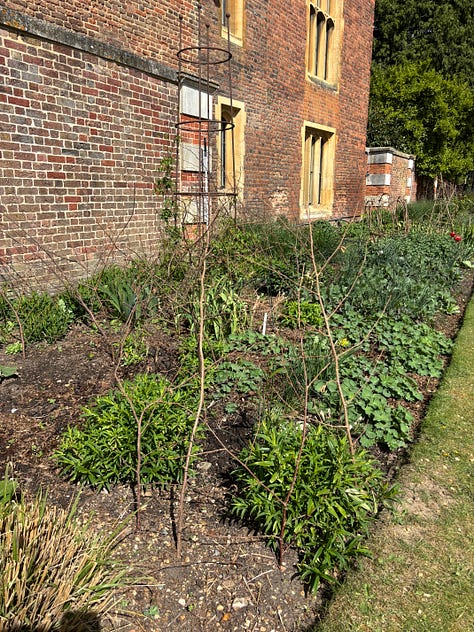
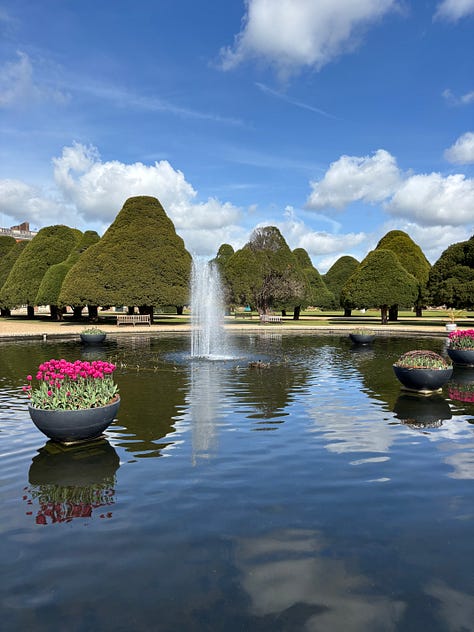
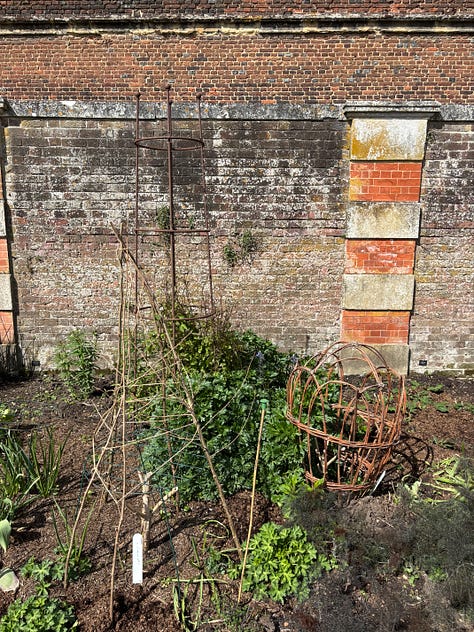
But my absolute favourite supports of all were the woven willow supports over the tops of the tulip pots. Look to the very right of the picture with the lake in it and you’ll see the support like a basket over the top of the pot. Once the tulips grow up through them you wont see the supports, as demonstrated very handily by the pink tulips on the left of the picture.
You can recreate these supports yourself at home, either by collecting long straight sticks with supporting side branches on walks with the kids. Or if you fancy something more permanent you could learn to weave a willow support or make some supports out of metal. I show you how to create metal plant supports in this (very old) Youtube video.
Binary colour combinations
I’m not sure whether it’s fashionable or historical to plant tulips in two colours in the same border. But there’s a few reasons why I love it.
Reason Number One
It really is a feast for the eyes, like a main line injection of colour into your bloodstream and wowsers does it give you a full on dose of joy.
Reason Number Two
Despite the fact that only two types of bulbs have been planted in these beds, you can see that there are far more colours appearing than just the two types planted. It reminds us that nothing in this life is binary. There is always space for nuance, understanding and acceptance. Here Mother Nature is showing us that as people or flowers we all have our own uniquenesses and they should be celebrated and encouraged, because when that happens, wow is life more joyful.
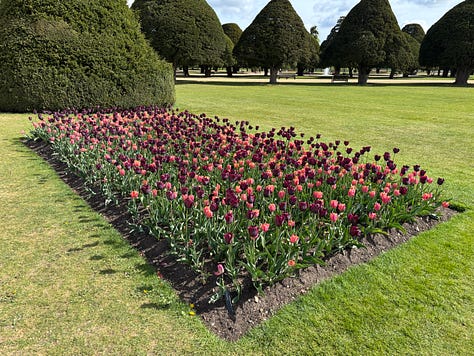
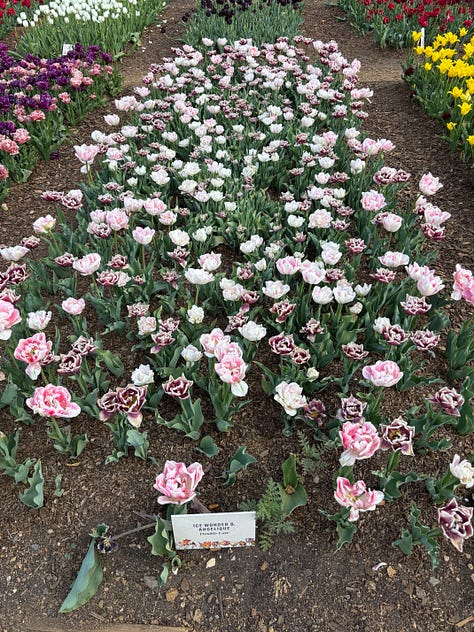
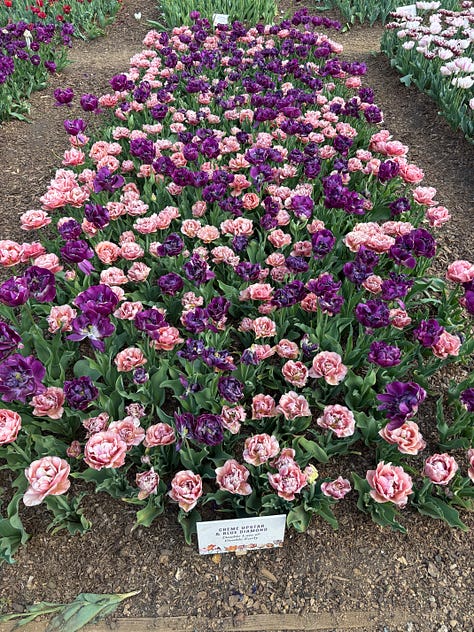
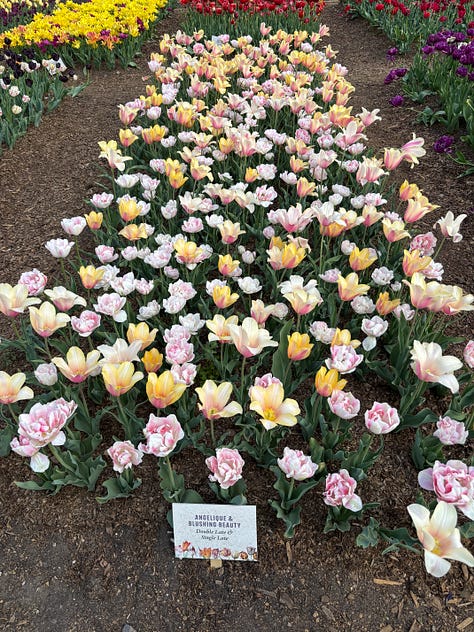
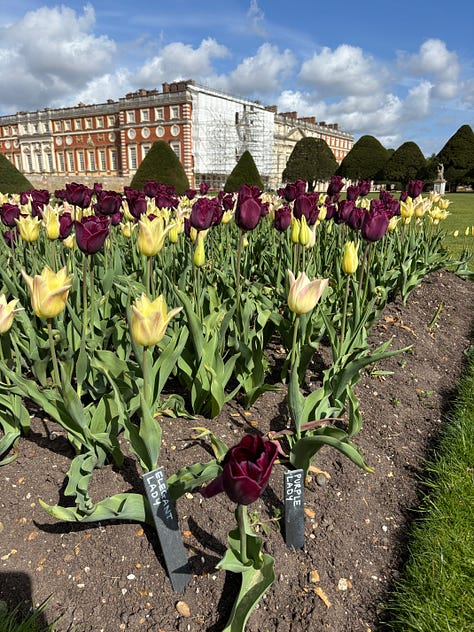
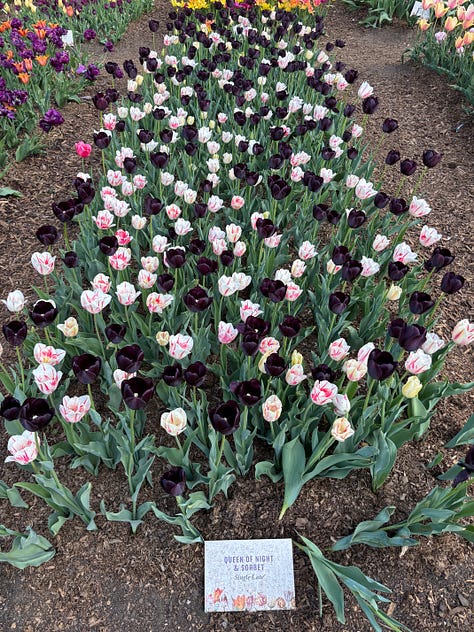
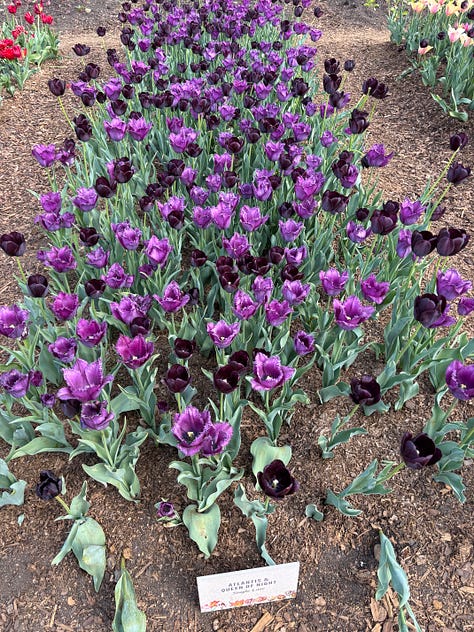
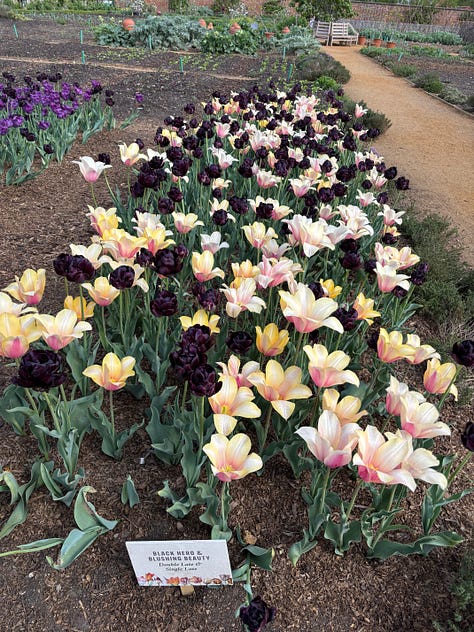
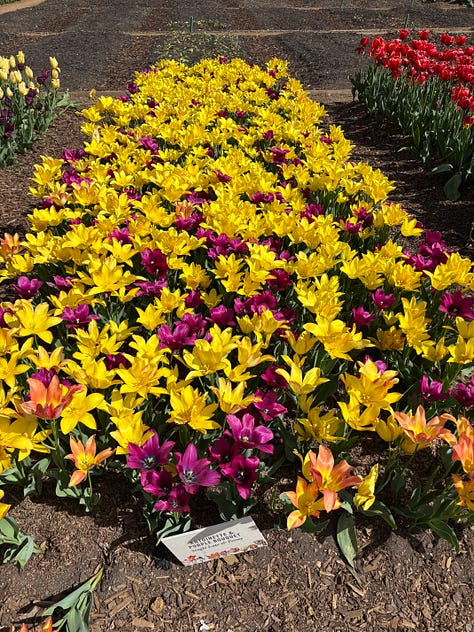
Reason Number 3
It adds more visual interest than a single block of colour. While impactful, single coloured displays feel a little flat in comparison.
So you know what to do in order to recreate this at home. Choose two colours, you’ll notice in many of these displays one is light and one is dark and mix them up as you plant them. And you never know what non-binary magic might appear in your borders.
This post is a long one and due to all the gorgeous piccies, might be cut short if you’re reading in your email inbox. Click the button below and join me in the app for the full article in all its gloriousness.
THAT wisteria
I adore a wisteria anyway. But what I loved about this one was the way it completely enveloped you. It was grown along the wall below you AND along the structure up above you. So that when you stood in what was effectively a viewing platform for this gorgeous garden (more on that later) you were completely surrounded by it- stun hun! The sweet smell, the almost bronzey colour of the leaves, the delicate purple of the flower bunches.
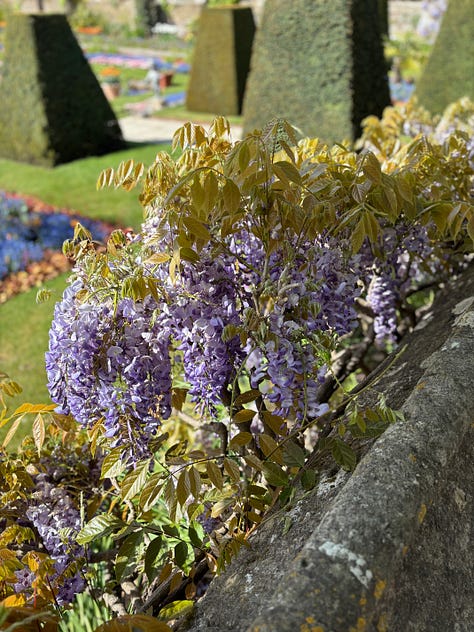
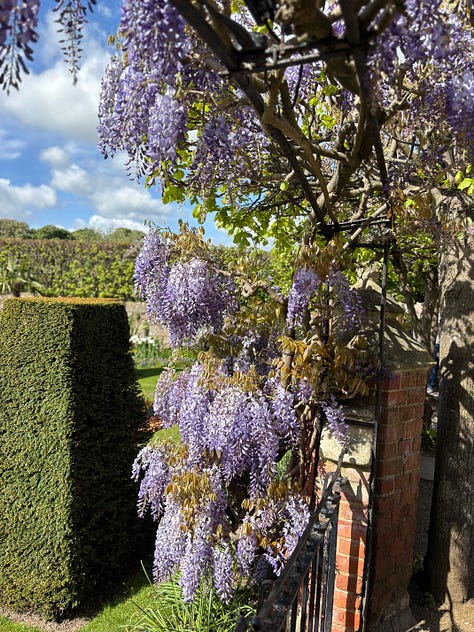
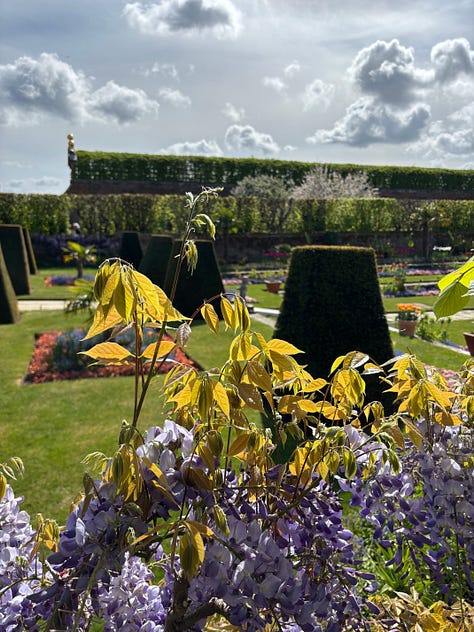
So if you’re thinking of adding a wisteria to your garden I want to encourage you to think outside the box a little. Don’t just grow it up the front of the house. Have a think about where else you could grow it:
Over the top of a seating area so the scented flowers hang down to delight you with their perfume.
Up through a big tree in your garden to create a wonderful intermingling of plants.
Along the length of a low wall or a fence so that when you are leaning over to chat to your neighbour you can savour the delights of it in unexpected ways.
Being surrounded by green
From purple to green. Green is the colour of calm, growth and abundance. It’s extremely restorative, you can literally feel your heartbeat slow and the tension melt away from you when you’re surrounded by green.
As I walked into this amazing tunnel of grape vines at Hampton Court I could feel the scratchy heat of the day melt away and my nervous system calm. Much the same as I do when I walk into a woodland.
But what do you do if you don’t have access to a woodland on the daily?
Here’s the first thing I’d do…..


